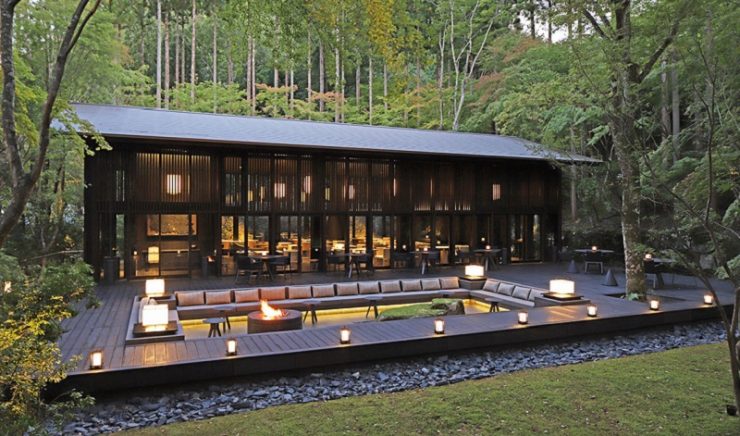A GARDEN is a sanctuary; profoundly peaceful and consummately private. Meticulously cared for and tended to throughout the year, it provides an intimate space for contemplation and respite.
It skilfully showcases the natural landscape it inhabits, transforming each season with new bursts of life, providing a unique insight into a destination. The legacy of plant life – its healing qualities and soul-cradling beauty – is revered in many cultures around the world and since antiquity gardens have been planted to nourish the soul.
At Aman, a team of green-fingered experts tend to the gardens year-round, fostering serene natural landscapes that transport guests from their everyday lives into a state of joyful tranquillity. Produce grown in the kitchen gardens is incorporated into dishes, aiding digestion and providing lasting nutritional benefits, as well as into treatments at the Aman Spa to encourage optimal wellbeing.
Amankila, Bali
Claiming a breathtaking location on the coastline in eastern Bali, beneath sacred Mount Agung, Amankila has long held a deep connection with the unspoilt landscape that surrounds it.
In early 2020, the gardeners at Amankila began extending the resort’s organic garden, planting seeds for a variety of fruit and vegetables such as kangkung, long beans, cassava, sweet potato, taro, bok choy, chilli, aubergine, spinach, snow peas, tomatoes, papaya, pineapples, passion fruit, dragon fruit, rambutan mango, durain, coffee plants and cacao.
All the produce grown will be used by the kitchen team for the restaurant and guests will have the chance to harvest their own ingredients before learning how to create dishes in an organic focussed cooking class. The team will also breed quails with the aim of supplying fresh quail eggs for dishes at the resort.
Amanyangyun, China
Located just outside downtown Shanghai, Amanyangyun is a unique forest village of modern and historic Ming and Qing dynasty dwellings and tranquil gardens. During the construction of the resort, 10,000 camphor trees were painstakingly transferred 700 kilometres to Shanghai from the Jiangxi Province in eastern China where the building of a reservoir threatened their continued existence.
To save them from being lost to flooding a team of botanists oversaw the extraction of the trees replanting each one to form the now flourishing camphor forest, which is enjoyed by guests of Amanyangyun today.
The forest is also home to a variety of other trees and evergreen shrubs, including several green tea trees and mint bushes, that are plucked daily for fresh tea. Also found in the resort’s verdant surroundings is the Iris Japonica, which is often referred to as the ‘Butterfly Flower’, and is native to China with pale blue, lavender or white petals and an orange or yellow crest.
Amanyangyun’s 450sq-m organic garden supplies seasonable vegetables and fruit such as aubergine, cucumber, red peppers and melons for use in the resort’s three restaurants. New menus in each restaurant utilise only the freshest ingredients from the organic garden and are tailored to provide lasting nutritional benefits and aid digestion.
Aman Kyoto, Japan
Set in a secret garden at the heart of a 32-hectare forest, Aman Kyoto is an ethereal world apart: moss-covered footpaths link tranquil forest glades and streams provide a soothing soundtrack broken only by birdsong.
Honoured to be the new guardian of this living heritage site, Aman worked closely with renowned landscape architect, Professor Akihiro Shimoda, to restore the historic garden to its full glory and to recreate the lost landscape of the Edo period. Using only indigenous plants and trees, he ensured that the garden would be completely self-sustaining, without a single piece of machinery marring its pristine contours.
The gardens were designed in such a way so as not to simply let nature take over, but to create a refined and aesthetically pleasing space. For example, the maple trees are carefully placed so that their canopies float like clouds between two green layers. Above them are local evergreen trees, such as Japanese cedars over The Living Pavilion, and Camphor trees lining the main promenade. Underneath, evergreen shrubs such as Japanese andromeda, Japanese camellia, Japanese blue oaks, are blanketed by a luminous carpet of evergreen moss. The composition is quite simple, but the impression it creates is strong.
A masterpiece with approximately 1,500m of meandering pathways, multiple viewpoints and at least seven secluded outdoor dining sites, Aman Kyoto’s garden changes like a kaleidoscope with the seasons. Winter’s camellias are spectacular against the garden’s evergreen Japanese cedars, andromeda and lush wood ferns, until February’s plum blossoms signal spring’s arrival.
March and April’s famous cherry blossoms segue into summer’s plethora of blooms, from azaleas and peonies, to hydrangeas and irises. Autumn sets the garden’s Japanese maples on fire, as their magnificent red and orange foliage competes for attention with multi-hued chrysanthemums. The garden also features some rare endemic species, including asarum nipponicum, or ‘wild ginger’. [traveltext.id]
















